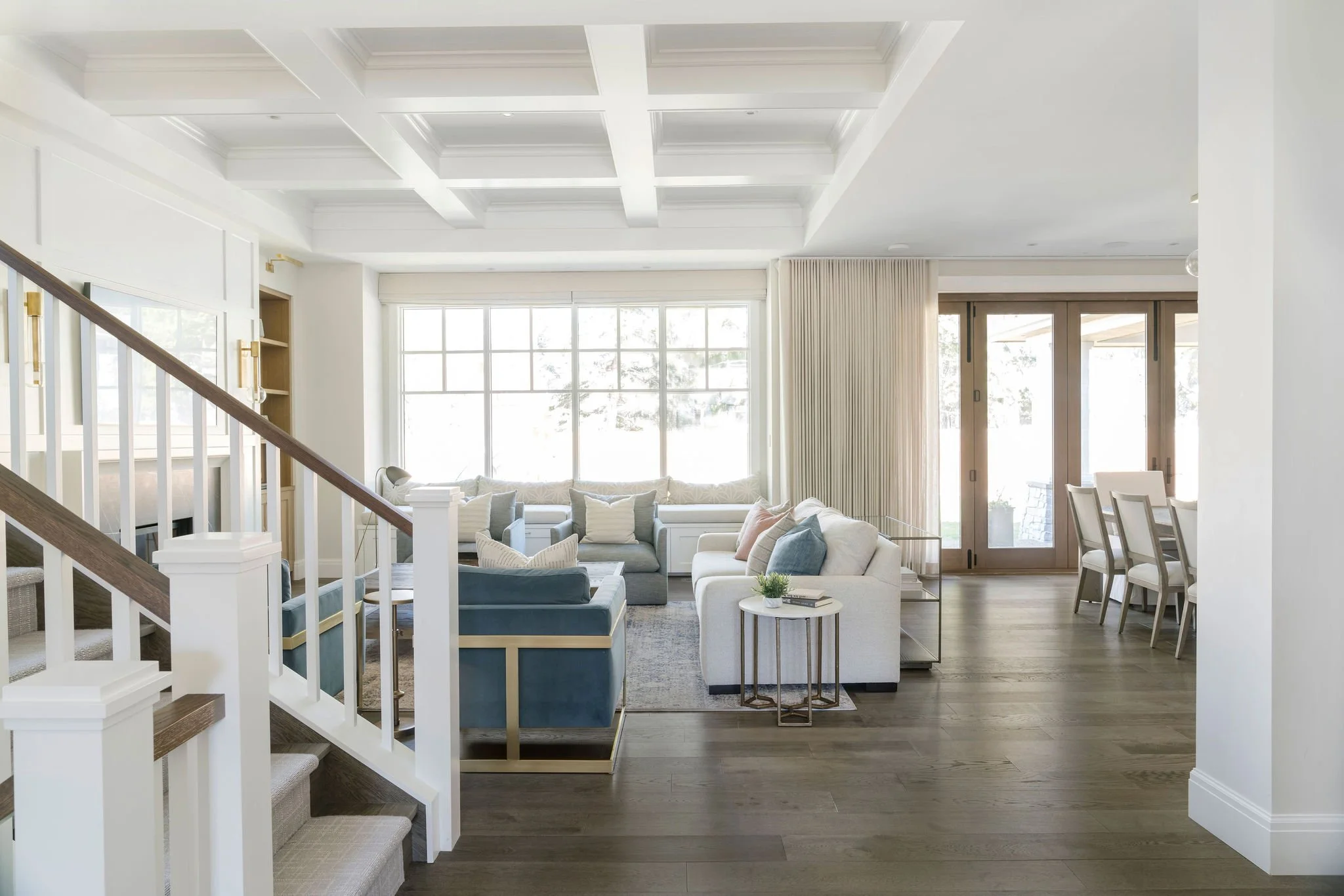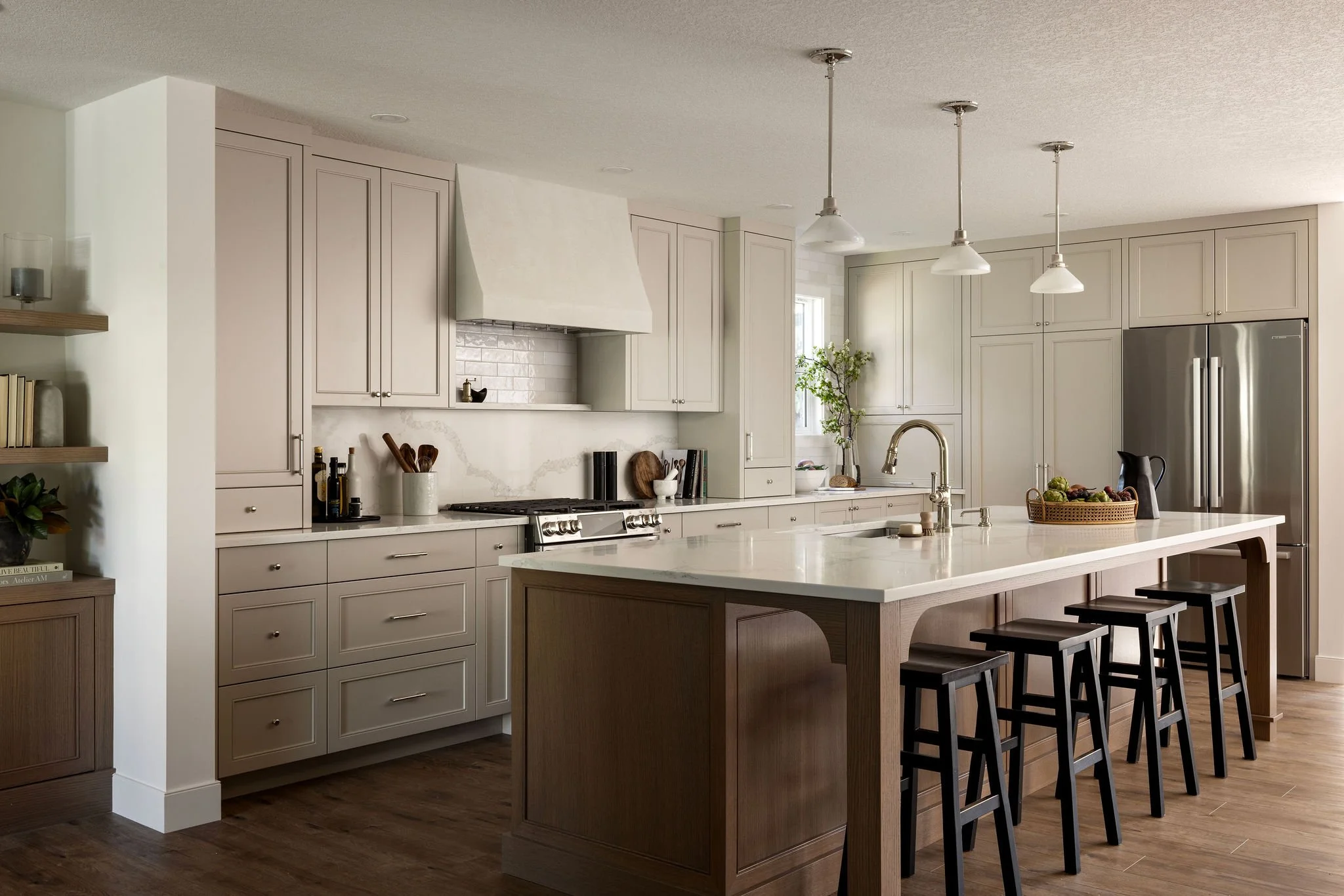Family-Friendly Interior Design
A client once told me, while they loved their home, it wasn’t holding up to family life. The finishes looked great at first, but weren't built for daily wear. Their kids were still young, and things were constantly needing to be replaced or repaired. It started to feel like they were designing around damage control instead of designing with their whole family in mind. They wanted a home that supported their kids, but still felt like them. Something durable, thoughtful, and pulled together. A space where sticky fingers, soccer cleats, and dinner hostings could all coexist under one roof. Maybe that sounds familiar?
If you’re in that in-between phase, juggling careers, kids’ schedules, and trying to keep the dog off the furniture, you’re not alone. Many of the families we work with come to us at that exact moment. They want a home that holds up to everyday life, but still feels elevated. They want something cohesive and welcoming.
So how do you design a home that works for right now, and still makes sense five or ten years from now? Let’s talk about it.
Start With People, Not Products
Before we talk about flooring or fabrics, we ask about you. How old are your kids? Are they the “build a fort in every room” type, or more mellow? What’s your tolerance for wear, tear, and a bit of character? Would you rather something patinas gracefully over time or not change at all?
These conversations shape everything. And they also help you stay on budget. When we understand your lifestyle and priorities, we can recommend materials and layouts that meet your expectations without going overboard on features you may not need.
At the end of the day, your child won’t be five or six forever. The crayon marks will stop showing up. The toys will get smaller, then disappear altogether. And when that happens, your home shouldn’t feel stuck in an earlier chapter. That’s why we design not just for who your family is now, but for who you’re all becoming. A home that grows up with you, gracefully.
Choose Materials That Do the Work
There are materials we return to again and again, not because they’re trendy, but because they work.
Engineered hardwood is a favourite. It’s low sheen, hides wear, and holds up beautifully in family spaces. And if something does happen, individual boards can be replaced without redoing the whole floor.
Quartz or Dekton countertops offer the elegance of natural stone with less upkeep. They’re stain-resistant, durable, and easy to maintain, great for busy kitchens where a lot of life happens.
Large-format porcelain tile in kids’ bathrooms. Fewer grout lines make for easier cleaning, and we usually opt for a soft neutral grout, something that ages gracefully and doesn’t demand constant scrubbing.
Material placement is also important.
Is it going in a high-traffic hallway or a quiet guest room? Will it be near water? Will little feet be running through with wet boots or dragging toys across the floor? The same material can behave very differently depending on where it’s placed. Take MDF, it can work well in the right spot, but near a bathtub, it tends to swell and break down over time. Something that works beautifully in one space might fall apart in another, so thinking carefully about placement helps create a home that has the best chance of doing its job, day in and day out.
Invest Where It Counts
We get it, it can feel risky to spend on something nice when your kids are still in that stage of jumping on the furniture. The instinct is to go for something “for now,” with the plan to upgrade later. But more often than not, those stopgap pieces wear out quicker than you’d expect, and replacing them ends up costing more in the long run.
Take sofas. A low-quality frame and foam just can’t keep up with years of play, snacks, and naps. Investing in a well-built sofa with performance fabric means you’ll have something that holds up, feels good to sit on, and still looks like it belongs in a grown-up space.
That’s why we suggest putting your budget toward the pieces that do the heavy lifting. Keep them neutral and timeless so they age well, and let the personality come through in the parts you can easily change such as paint, pillows, and lighting. Your child’s style (and yours) will shift. Your foundation shouldn’t have to.
Design for Flow (Not Perfection)
In a busy home, how your spaces feel matters and flow makes a bigger difference than perfection ever could.
We often recommend choosing one primary paint colour throughout your shared spaces. It instantly creates a sense of cohesion. Then, bring in contrast or mood in the smaller rooms, maybe a deeper tone in the powder room, or a pop of colour in the den.
The same idea applies to flooring. Carrying hardwood throughout the home, including the bedrooms, creates a clean visual line and cuts down on maintenance. It’s also something we often suggest for families with young kids, because carpet and children rarely make the best pair. Between spills, crumbs, and wear, it tends to show its age quickly, and if your child ever develops allergies, you’ll be glad you made the switch early.
And don’t forget safety. Kids move fast, so we pay close attention to things like spatial layout, rounded edges, and ledges that fall right at toddler height. It’s the kind of quiet planning that helps your home work with your family, not against it.
Your Home Should Reflect You, All of You
Designing for your family doesn’t mean giving up on your style. It’s about making thoughtful choices that reflect where you are now, and where you're headed next. Your home should feel like yours, not just a space that works for your kids, but one that reflects your taste, your routines, and the life you’re building together.
So if your home wasn’t designed with children in mind, or now feels stuck in the toddler years, you don’t need to wait for the next phase of your life to make a change. With the right guidance, you can have a space that feels calm, pulled together, and still handles real life.
And if you’re wondering where to start, we’d love to help.






